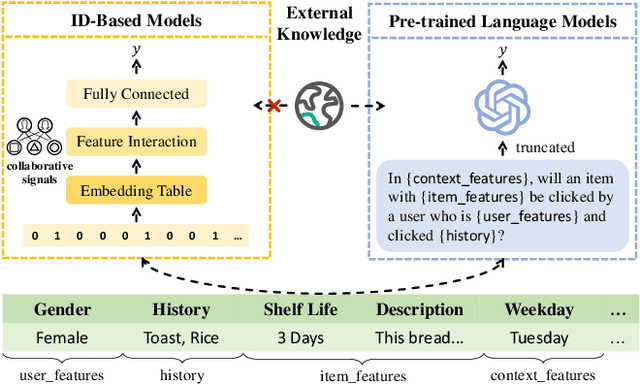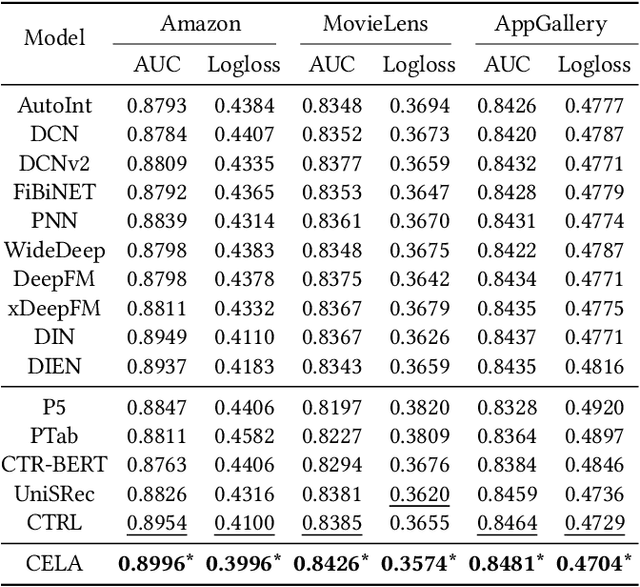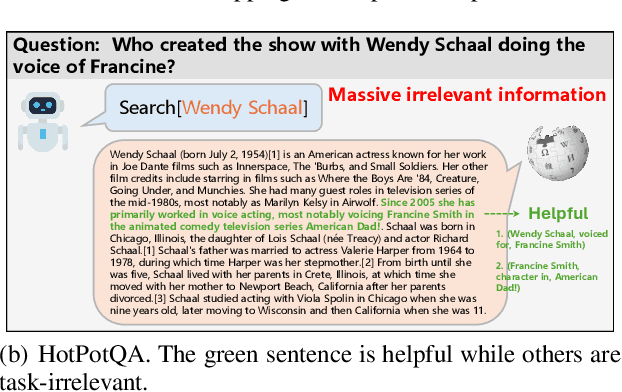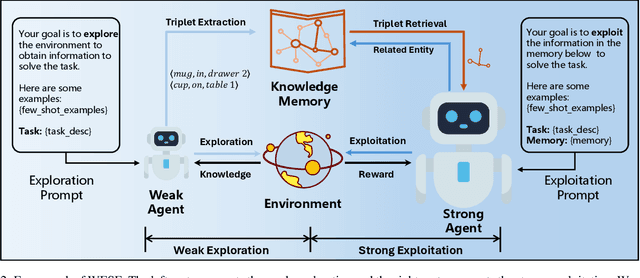Xingmei Wang
Self-Supervised Cross-Modal Learning for Image-to-Point Cloud Registration
Sep 19, 2025Abstract:Bridging 2D and 3D sensor modalities is critical for robust perception in autonomous systems. However, image-to-point cloud (I2P) registration remains challenging due to the semantic-geometric gap between texture-rich but depth-ambiguous images and sparse yet metrically precise point clouds, as well as the tendency of existing methods to converge to local optima. To overcome these limitations, we introduce CrossI2P, a self-supervised framework that unifies cross-modal learning and two-stage registration in a single end-to-end pipeline. First, we learn a geometric-semantic fused embedding space via dual-path contrastive learning, enabling annotation-free, bidirectional alignment of 2D textures and 3D structures. Second, we adopt a coarse-to-fine registration paradigm: a global stage establishes superpoint-superpixel correspondences through joint intra-modal context and cross-modal interaction modeling, followed by a geometry-constrained point-level refinement for precise registration. Third, we employ a dynamic training mechanism with gradient normalization to balance losses for feature alignment, correspondence refinement, and pose estimation. Extensive experiments demonstrate that CrossI2P outperforms state-of-the-art methods by 23.7% on the KITTI Odometry benchmark and by 37.9% on nuScenes, significantly improving both accuracy and robustness.
OneRec-V2 Technical Report
Aug 28, 2025Abstract:Recent breakthroughs in generative AI have transformed recommender systems through end-to-end generation. OneRec reformulates recommendation as an autoregressive generation task, achieving high Model FLOPs Utilization. While OneRec-V1 has shown significant empirical success in real-world deployment, two critical challenges hinder its scalability and performance: (1) inefficient computational allocation where 97.66% of resources are consumed by sequence encoding rather than generation, and (2) limitations in reinforcement learning relying solely on reward models. To address these challenges, we propose OneRec-V2, featuring: (1) Lazy Decoder-Only Architecture: Eliminates encoder bottlenecks, reducing total computation by 94% and training resources by 90%, enabling successful scaling to 8B parameters. (2) Preference Alignment with Real-World User Interactions: Incorporates Duration-Aware Reward Shaping and Adaptive Ratio Clipping to better align with user preferences using real-world feedback. Extensive A/B tests on Kuaishou demonstrate OneRec-V2's effectiveness, improving App Stay Time by 0.467%/0.741% while balancing multi-objective recommendations. This work advances generative recommendation scalability and alignment with real-world feedback, representing a step forward in the development of end-to-end recommender systems.
OneRec Technical Report
Jun 16, 2025Abstract:Recommender systems have been widely used in various large-scale user-oriented platforms for many years. However, compared to the rapid developments in the AI community, recommendation systems have not achieved a breakthrough in recent years. For instance, they still rely on a multi-stage cascaded architecture rather than an end-to-end approach, leading to computational fragmentation and optimization inconsistencies, and hindering the effective application of key breakthrough technologies from the AI community in recommendation scenarios. To address these issues, we propose OneRec, which reshapes the recommendation system through an end-to-end generative approach and achieves promising results. Firstly, we have enhanced the computational FLOPs of the current recommendation model by 10 $\times$ and have identified the scaling laws for recommendations within certain boundaries. Secondly, reinforcement learning techniques, previously difficult to apply for optimizing recommendations, show significant potential in this framework. Lastly, through infrastructure optimizations, we have achieved 23.7% and 28.8% Model FLOPs Utilization (MFU) on flagship GPUs during training and inference, respectively, aligning closely with the LLM community. This architecture significantly reduces communication and storage overhead, resulting in operating expense that is only 10.6% of traditional recommendation pipelines. Deployed in Kuaishou/Kuaishou Lite APP, it handles 25% of total queries per second, enhancing overall App Stay Time by 0.54% and 1.24%, respectively. Additionally, we have observed significant increases in metrics such as 7-day Lifetime, which is a crucial indicator of recommendation experience. We also provide practical lessons and insights derived from developing, optimizing, and maintaining a production-scale recommendation system with significant real-world impact.
CELA: Cost-Efficient Language Model Alignment for CTR Prediction
May 17, 2024



Abstract:Click-Through Rate (CTR) prediction holds a paramount position in recommender systems. The prevailing ID-based paradigm underperforms in cold-start scenarios due to the skewed distribution of feature frequency. Additionally, the utilization of a single modality fails to exploit the knowledge contained within textual features. Recent efforts have sought to mitigate these challenges by integrating Pre-trained Language Models (PLMs). They design hard prompts to structure raw features into text for each interaction and then apply PLMs for text processing. With external knowledge and reasoning capabilities, PLMs extract valuable information even in cases of sparse interactions. Nevertheless, compared to ID-based models, pure text modeling degrades the efficacy of collaborative filtering, as well as feature scalability and efficiency during both training and inference. To address these issues, we propose \textbf{C}ost-\textbf{E}fficient \textbf{L}anguage Model \textbf{A}lignment (\textbf{CELA}) for CTR prediction. CELA incorporates textual features and language models while preserving the collaborative filtering capabilities of ID-based models. This model-agnostic framework can be equipped with plug-and-play textual features, with item-level alignment enhancing the utilization of external information while maintaining training and inference efficiency. Through extensive offline experiments, CELA demonstrates superior performance compared to state-of-the-art methods. Furthermore, an online A/B test conducted on an industrial App recommender system showcases its practical effectiveness, solidifying the potential for real-world applications of CELA.
WESE: Weak Exploration to Strong Exploitation for LLM Agents
Apr 11, 2024



Abstract:Recently, large language models (LLMs) have demonstrated remarkable potential as an intelligent agent. However, existing researches mainly focus on enhancing the agent's reasoning or decision-making abilities through well-designed prompt engineering or task-specific fine-tuning, ignoring the procedure of exploration and exploitation. When addressing complex tasks within open-world interactive environments, these methods exhibit limitations. Firstly, the lack of global information of environments leads to greedy decisions, resulting in sub-optimal solutions. On the other hand, irrelevant information acquired from the environment not only adversely introduces noise, but also incurs additional cost. This paper proposes a novel approach, Weak Exploration to Strong Exploitation (WESE), to enhance LLM agents in solving open-world interactive tasks. Concretely, WESE involves decoupling the exploration and exploitation process, employing a cost-effective weak agent to perform exploration tasks for global knowledge. A knowledge graph-based strategy is then introduced to store the acquired knowledge and extract task-relevant knowledge, enhancing the stronger agent in success rate and efficiency for the exploitation task. Our approach is flexible enough to incorporate diverse tasks, and obtains significant improvements in both success rates and efficiency across four interactive benchmarks.
Understanding the planning of LLM agents: A survey
Feb 05, 2024Abstract:As Large Language Models (LLMs) have shown significant intelligence, the progress to leverage LLMs as planning modules of autonomous agents has attracted more attention. This survey provides the first systematic view of LLM-based agents planning, covering recent works aiming to improve planning ability. We provide a taxonomy of existing works on LLM-Agent planning, which can be categorized into Task Decomposition, Plan Selection, External Module, Reflection and Memory. Comprehensive analyses are conducted for each direction, and further challenges for the field of research are discussed.
When Large Language Models Meet Personalization: Perspectives of Challenges and Opportunities
Jul 31, 2023Abstract:The advent of large language models marks a revolutionary breakthrough in artificial intelligence. With the unprecedented scale of training and model parameters, the capability of large language models has been dramatically improved, leading to human-like performances in understanding, language synthesizing, and common-sense reasoning, etc. Such a major leap-forward in general AI capacity will change the pattern of how personalization is conducted. For one thing, it will reform the way of interaction between humans and personalization systems. Instead of being a passive medium of information filtering, large language models present the foundation for active user engagement. On top of such a new foundation, user requests can be proactively explored, and user's required information can be delivered in a natural and explainable way. For another thing, it will also considerably expand the scope of personalization, making it grow from the sole function of collecting personalized information to the compound function of providing personalized services. By leveraging large language models as general-purpose interface, the personalization systems may compile user requests into plans, calls the functions of external tools to execute the plans, and integrate the tools' outputs to complete the end-to-end personalization tasks. Today, large language models are still being developed, whereas the application in personalization is largely unexplored. Therefore, we consider it to be the right time to review the challenges in personalization and the opportunities to address them with LLMs. In particular, we dedicate this perspective paper to the discussion of the following aspects: the development and challenges for the existing personalization system, the newly emerged capabilities of large language models, and the potential ways of making use of large language models for personalization.
 Add to Chrome
Add to Chrome Add to Firefox
Add to Firefox Add to Edge
Add to Edge